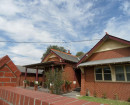BILTMORE (ALBERT PARK)
152 BRIDPORT STREET ALBERT PARK, PORT PHILLIP CITY
-
Add to tour
You must log in to do that.
-
Share
-
Shortlist place
You must log in to do that.
- Download report
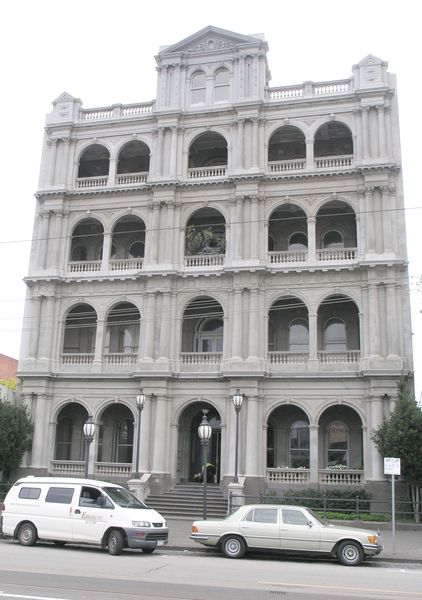

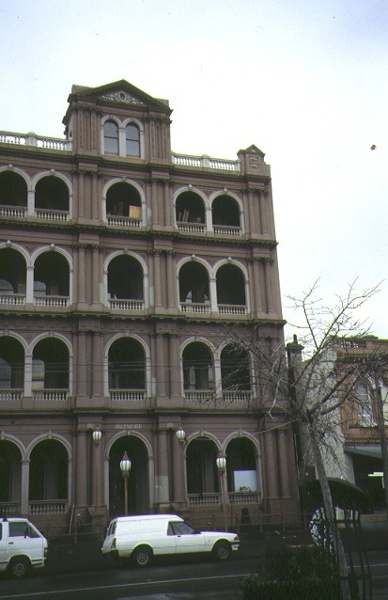
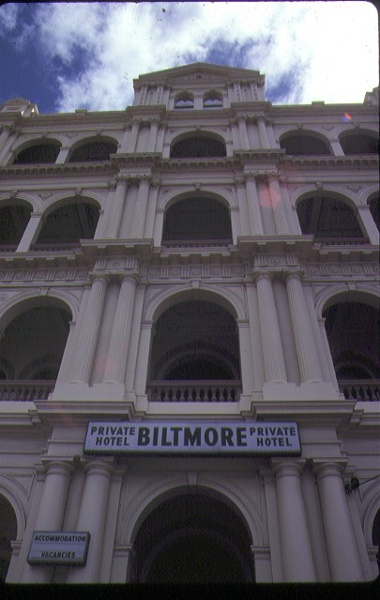
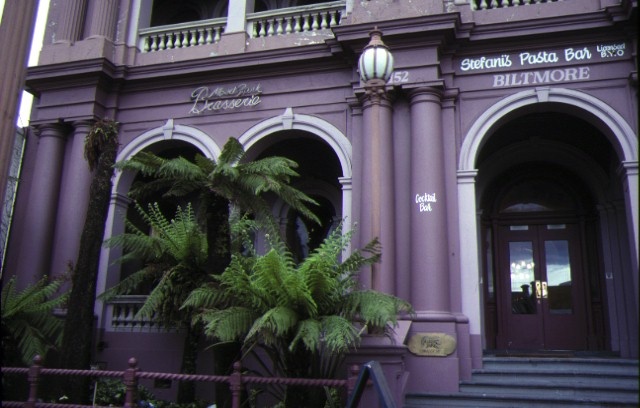
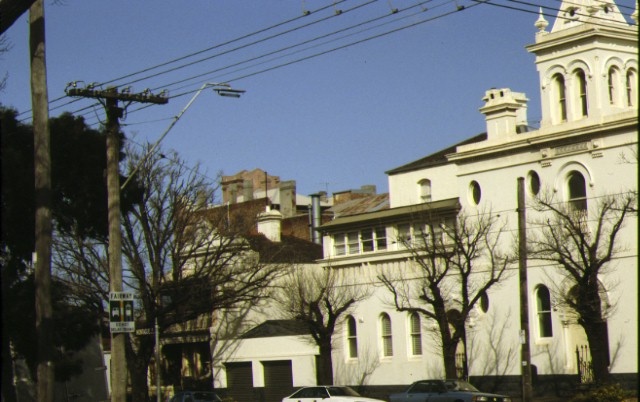
Statement of Significance
What is significant?
Built as the Albert Park Coffee Palace, Biltmore was begun in 1887 to designs by architect Walter Scott Law, and was completed in 1889 by architects Frederick de Garis and Son. This 40-room stuccoed brick building was constructed for the Coffee Palace Company. It was one of a number of coffee houses constructed in Melbourne and suburbs in the 1880s as part of the temperance movement, to provide an alcohol-free alternative to the public house. Sixty-nine Coffee Palaces, Coffee Taverns and Temperance Hotels were listed in the Melbourne Directory of 1890, including the Windsor Hotel Melbourne, (H0764), which was initially built as a hotel in 1883 and extended to become the Grand Coffee Palace by 1888; the Federal Coffee Palace, 1886 (demolished) and the Queen's Coffee Palace, Carlton, 1888 (demolished).
Designed in the free classical style of the later boom years in Melbourne, Biltmore is an imposing four storey facade of arcaded loggias. These loggias are divided into three bays with the central bay of one arch and the side bays of two arches. Pairs of engaged columns define these bays and employ different orders at each level from Tuscan, to Roman Doric and variations of the Corinthian above. The composition is surmounted by a balustrade and large central pediment with windows. Internally the ground floor contains a large dining room, ancillary service rooms and reception rooms.
Alterations and additions were made to the building in the late 1920s with another thirty-eight bedrooms added by the architects Arthur and Hugh Peck. Becoming a private hotel in 1928, it was renamed the Biltmore Private Hotel in 1931. In 1950 it was sold to the Royal Melbourne Hospital, with minor alterations undertaken by Stephenson and Turner, and used as a nurses' home, before reverting back to a private hotel in 1966. It was refurbished and subdivided into twelve apartments in the mid 1990s.
How is it significant?
Biltmore, Albert Park is of historical and architectural significance to the State of Victoria.
Why is it significant?
Biltmore, Albert Park is of historical significance due to its association with the temperance movement in Victoria and as one of the last surviving examples of the grand coffee palaces which were built in Melbourne in the 1880s.
Biltmore, Albert Park is of architectural significance as a fine and imposing four storey building by architect W. S. Law. Law designed many boom style buildings in Melbourne, including Drummond Terrace, 1890-1 (H0872) and Medley Hall, Carlton, 1892 (H0409). Both facades are similar to Biltmore in their overall symmetrical, arcaded form, but are of three and two storeys respectively.
[Online Data Upgrade Project 2007]
-
-
BILTMORE (ALBERT PARK) - History
Built as the Albert Park Coffee Palace, Biltmore was begun in 1887 to designs by architect Walter Scott Law, and was completed in 1889 by architects Frederick de Garis and Son. This 40-room stuccoed brick building was constructed for the Coffee Palace Company. It was one of a number of coffee houses constructed in Melbourne and suburbs in the 1880s as part of the temperance movement, to provide an alcohol-free alternative to the public house. Sixty-nine Coffee Palaces, Coffee Taverns and Temperance Hotels were listed in the Melbourne Directory of 1890, including the Windsor Hotel Melbourne, (H0764), which was initially built as a hotel in 1883 and extended to become the Grand Coffee Palace by 1888; the Federal Coffee Palace, 1886 (demolished) and the Queen's Coffee Palace, Carlton, 1888 (demolished).
Alterations and additions were made to the building in the late 1920s with another thirty-eight bedrooms added by the architects Arthur and Hugh Peck. Becoming a private hotel in 1928, it was renamed the Biltmore Private Hotel in 1931. In 1950 it was sold to the Royal Melbourne Hospital, with minor alterations undertaken by Stephenson and Turner, and used as a nurses' home, before reverting back to a private hotel in 1966. It was refurbished and subdivided into twelve apartments in the mid 1990s.
The draft statement of significance and the above history were produced as part of an Online Data Upgrade Project 2007.
BILTMORE (ALBERT PARK) - Permit Exemptions
General Exemptions:General exemptions apply to all places and objects included in the Victorian Heritage Register (VHR). General exemptions have been designed to allow everyday activities, maintenance and changes to your property, which don’t harm its cultural heritage significance, to proceed without the need to obtain approvals under the Heritage Act 2017.Places of worship: In some circumstances, you can alter a place of worship to accommodate religious practices without a permit, but you must notify the Executive Director of Heritage Victoria before you start the works or activities at least 20 business days before the works or activities are to commence.Subdivision/consolidation: Permit exemptions exist for some subdivisions and consolidations. If the subdivision or consolidation is in accordance with a planning permit granted under Part 4 of the Planning and Environment Act 1987 and the application for the planning permit was referred to the Executive Director of Heritage Victoria as a determining referral authority, a permit is not required.Specific exemptions may also apply to your registered place or object. If applicable, these are listed below. Specific exemptions are tailored to the conservation and management needs of an individual registered place or object and set out works and activities that are exempt from the requirements of a permit. Specific exemptions prevail if they conflict with general exemptions. Find out more about heritage permit exemptions here.Specific Exemptions:General Conditions: 1. All exempted alterations are to be planned and carried out in a manner which prevents damage to the fabric of the registered place or object. General Conditions: 2. Should it become apparent during further inspection or the carrying out of works that original or previously hidden or inaccessible details of the place or object are revealed which relate to the significance of the place or object, then the exemption covering such works shall cease and Heritage Victoria shall be notified as soon as possible. Note: All archaeological places have the potential to contain significant sub-surface artefacts and other remains. In most cases it will be necessary to obtain approval from the Executive Director, Heritage Victoria before the undertaking any works that have a significant sub-surface component.General Conditions: 3. If there is a conservation policy and planall works shall be in accordance with it. Note:A Conservation Management Plan or a Heritage Action Plan provides guidance for the management of the heritage values associated with the site. It may not be necessary to obtain a heritage permit for certain works specified in the management plan.
General Conditions: 4. Nothing in this determination prevents the Executive Director from amending or rescinding all or any of the permit exemptions. General Conditions: 5. Nothing in this determination exempts owners or their agents from the responsibility to seek relevant planning or building permits from the responsible authorities where applicable. Minor Works : Note: Any Minor Works that in the opinion of the Executive Director will not adversely affect the heritage significance of the place may be exempt from the permit requirements of the Heritage Act. A person proposing to undertake minor works must submit a proposal to the Executive Director. If the Executive Director is satisfied that the proposed works will not adversely affect the heritage values of the site, the applicant may be exempted from the requirement to obtain a heritage permit. If an applicant is uncertain whether a heritage permit is required, it is recommended that the permits co-ordinator be contacted.
-
-
-
-
-
HOTEL VICTORIA
 Victorian Heritage Register H0820
Victorian Heritage Register H0820 -
ALBERT PARK PRIMARY SCHOOL
 Victorian Heritage Register H1629
Victorian Heritage Register H1629 -
ALBERT PARK RAILWAY STATION COMPLEX
 Victorian Heritage Register H1558
Victorian Heritage Register H1558
-
"1890"
 Yarra City
Yarra City -
"AMF Officers" Shed
 Moorabool Shire
Moorabool Shire -
"AQUA PROFONDA" SIGN, FITZROY POOL
 Victorian Heritage Register H1687
Victorian Heritage Register H1687
-
'Lawn House' (Former)
 Hobsons Bay City
Hobsons Bay City -
1 Fairchild Street
 Yarra City
Yarra City -
10 Richardson Street
 Yarra City
Yarra City
-
-












